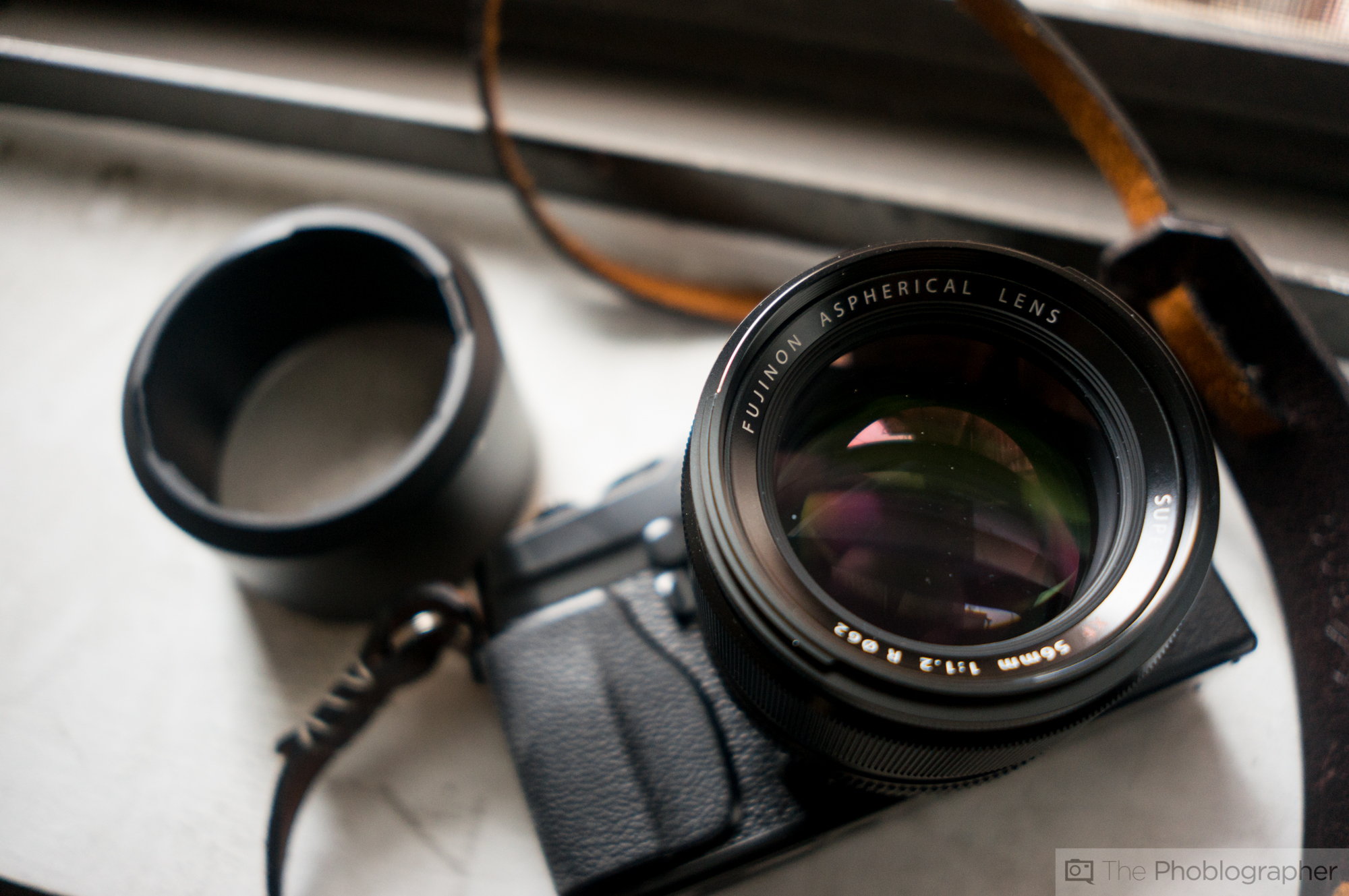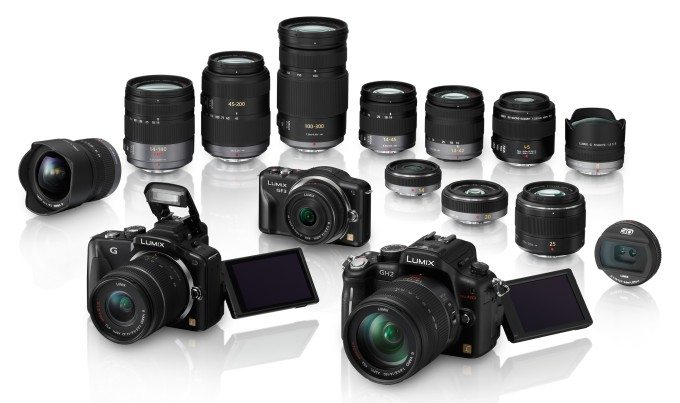Since the introduction of the Panasonic Lumix G1 as the first mirrorless interchangeable-lens digital camera that is not a rangefinder, most major manufacturers have hopped onto the bandwagon and created their own mirrorless systems. Even Canon and Nikon, who are still propagating the DSLR as the only viable tool for professionals, had to get their respective pieces of the cake. But in today’s jungle of mirrorless camera offerings, it’s easy to get lost. Here’s a guide to help you find the right mirrorless camera for you.
Okay, so you decided to get a new mirrorless camera. We’re not going to talk about why you should or would choose a mirrorless camera over a point-and-shoot or a DSLR, since you’ve already made that decision anyway. Now, the question is which one to get. In order to approach that conundrum, what you first need to do is to figure out what exactly it is that you need. Any by that, we don’t mean what you want. Of course you’ll want the latest and greatest, but that isn’t always what’s best for you.
Mirrorless cameras come in all shapes and sizes: as small as the tiniest point-and-shoot, and as large as a full-fledged professional DSLR. They come with tiny compact camera sensors, with medium-sized sensors and, since recently, with full-frame (i.e. 35mm) sensors. They come with integrated electronic viewfinders, with accessory EVFs or with a display alone. They come with an integrated grip, with accessory grips or without a grip. And so on and so forth. So, let’s break down the various choices there are to make.
Body Size
First of all, body size. This choice depends on a couple of factors. For example, do you want to be able to carry your mirrorless camera in your vest pocket? If that is the case, you’ll want one of the smaller and slimmer ones, and ideally pair it with a pancake lens (we’ll get to lenses later.) Do you have large hands, though? Then you’ll want a larger body, and ideally one that comes with an integrated grip. Finally, do you need lots of buttons and dials for manual control on your camera? You’ll typically find these on larger models, while you’ll be using the touchscreen a lot on the smaller models.
(Note: the links below will lead you to our respective first impressions and/or reviews of each camera.)
Small and Pocketable Cameras
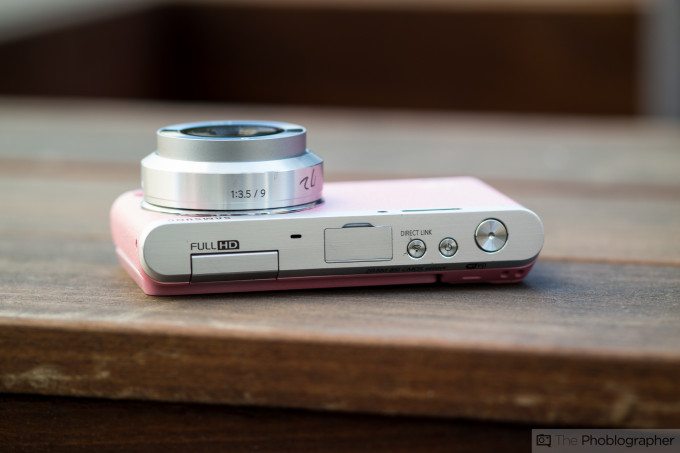
The smallest and most pocketable cameras will usually feature only a screen and a limited choice of buttons. These cameras are usually aimed at the entry-level crowd, and they are your best choice if you’re looking for a camera to always carry with you. Below is a list of some of the smallest mirrorless cameras.
Cameras with 1″ or smaller sensors, as small as the smallest point-and-shoots:
- Samsung NX Mini (1″)
- Pentax Q7 (1/1.7″) and Q10 (1/2.3″)
- Nikon 1 J3 and S1 (1″)
Small models with Micro Four Thirds sensors, not much larger than most point-and-shoots:
- Panasonic GM1 and GF6
- Olympus PEN Mini E-PM2
Medium-Sized Cameras
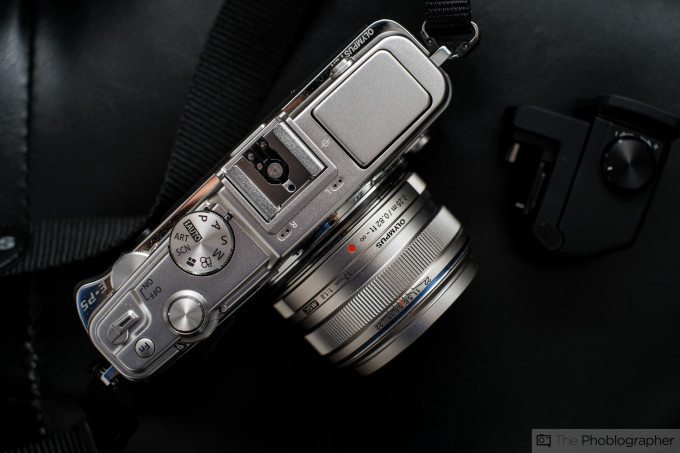
This is the category where due to their sensor size even the smallest APS-C models go. Not only are mirrorless cameras with an APS-C sensor usually larger than their Micro Four Thirds or 1″ counterparts, they also come with considerably larger lenses. This category is extensive, as the majority of currently available mirrorless camera goes in here.
Cameras with 1″ sensors, about the size of advanced point-and-shoots:
- Nikon 1 V3 and AW1
Cameras with Micro Four Thirds or APS-C sensors the size of advanced point-and-shoots:
- Olympus PEN Lite E-PL5 (MFT)
- Canon EOS M (APS-C)
- Sony A5000 (APS-C)
- Samsung NX300 and NX1100 (APS-C)
Cameras with Micro Four Thirds or APS-C sensors larger than most point-and-shoots:
- Panasonic GX7 (MFT)
- Olympus PEN E-P5 and OM-D E-M10 (MFT)
- Sony A3000 and A6000 (APS-C)
- Fujifilm X-A1, X-M1 and X-E2 (APS-C)
Full-Size Cameras
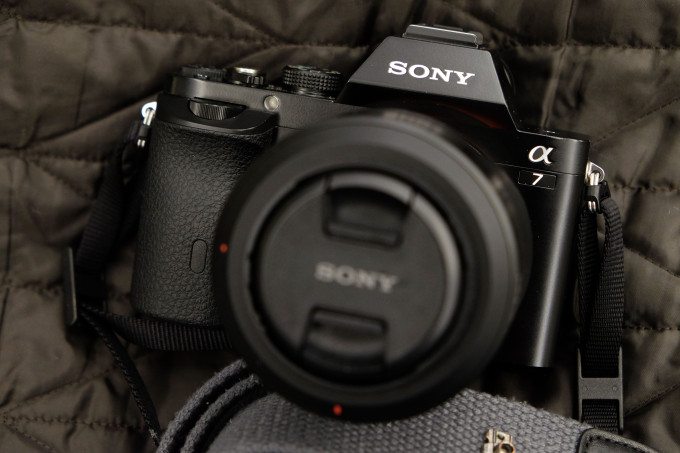
Full-size mirrorless cameras approach proper DSLRs in size, and often come with integrated EVFs and proper grips that also make them look and feel like DSLRs. These cameras typically feature larger sensors, Micro Four Thirds-sized and upwards. They are also often aimed at advanced amateurs, enthusiasts and professionals.
Full-size Micro Four Thirds cameras:
- Olympus OM-D E-M1
- Panasonic G6, GH3 and GH4
Full-size cameras with an APS-C sensor:
Full-size cameras with a 35mm full-frame sensor:
Accessories: EVF, Grip, Flash
Besides body size, you’ll have to decide whether you need certain accessories on your camera or not. For example, are you happy using the rear display exclusively, or do you prefer looking through a proper viewfinder? Do you want a proper grip on your camera, or can you live with a p&s-styled body? And finally, is an integrated pop-up flash a necessity for you, and/or do you want to be able to attach a proper flashgun? Not all bodies sport flash hot-shoes! An EVF, a grip and flash can all either be integrated into the body, be available as accessories or completely lack for a specific model.
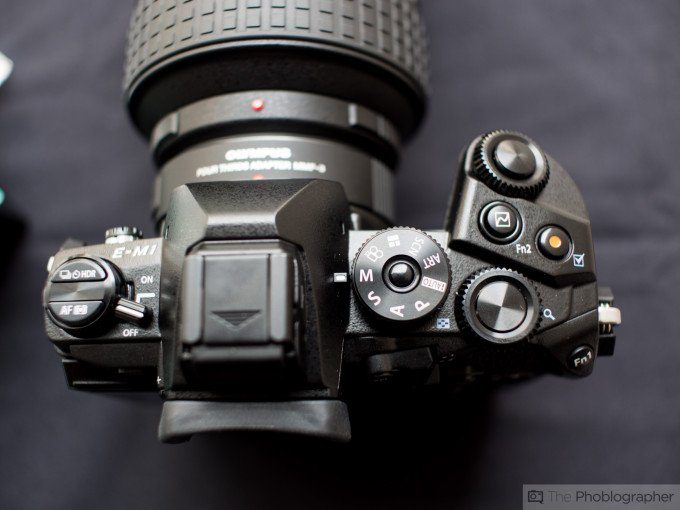
Cameras without integrated grip, EVF and/or hot shoe:
- Pentax Q7 and Q10: – EVF, small grip, + hot shoe
- Samsung NX Mini: – EVF, – grip, – hot shoe
- Nikon 1 J3 and S1: – EVF, accessory grip, – hot shoe
- Nikon 1 V3 and AW1: accessory EVF, small grip (negligibly small grip on AW1), – hot shoe
- Panasonic GM1: – EVF, accessory grip, – hot shoe
- Panasonic GF6: – EVF, small grip, – hot shoe
- Canon EOS M: – EVF, negligibly small grip, – hot shoe
- Fujifilm X-A1 and X-M1: – EVF, small grip, + hot shoe
- Sony A5000: – EVF, large grip, – hot shoe
- Samsung NX300 and NX1100: – EVF, small grip, – hot shoe
Cameras with integrated or accessory EVF, integrated grip and hot shoe:
- Olympus PEN series: accessory EVF, small grip, hot shoe
- Olympus OM-D E-M10: integrated EVF, small grip, hot shoe
- Olympus OM-D E-M1: integrated EVF, large grip, hot shoe
- Panasonic GX7, G6, GH3 and GH4: integrated EVF, large grip (small grip on GX7), hot shoe
- Fujifilm X-E2, X-Pro 1 and X-T1: integrated EVF, small grip, hot shoe
- Sony A3000 and A6000, integrated EVF, large grip, hot shoe
- Sony A7 and A7R: integrated EVF, large grip, hot shoe
- Samsung NX30: integrated EVF, large grip, hot shoe
Sensor Size and Image Quality
Now let’s get to the internals. The most important thing about any camera is its sensor, as without it, it wouldn’t be able to take any pictures. Sensors, just as camera bodies, come in various shapes and sizes, and along with size also goes image quality. As a general rule, the larger the sensor the higher the image quality. But that’s only half the truth, as some sensors simply perform better than others, regardless of their size. So let’s take a look at the various sensor sizes available in mirrorless cameras, and their respective pros and cons.
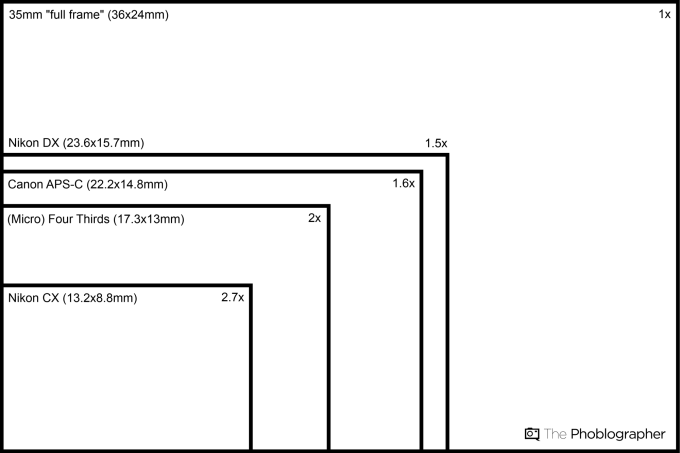
Point-and-Shoot Sensors
Most mirrorless camera systems use sensors that are larger than what you’d find in common point-and-shoot cameras, with one exception: the Pentax Q system. In an attempt to further miniaturize mirrorless cameras, Pentax decided to put a 1/2.3″-type sensor in its first two mirrorless cameras, the Q and Q10. Two years later, the system was refreshed with the Q7, sporting a slightly larger 1/1.7″-type sensor. Both are still considerably smaller than the next larger sensor, the 1″-type. This allows, in theory, for smaller bodies and smaller lenses, but also compromises overall image quality.

Cameras with point-and-shoot-sized sensors:
- Pentax Q system
1″-Type Sensors
Sensors of this size are included in some point-and-shoots such as the Sony RX100, and have first been established for mirrorless cameras in Nikon’s 1 system. Meanwhile, Samsung brought another mirrorless camera with a 1″ sensor, the NX Mini. While larger than most common point-and-shoot sensors, the 1″ sensor is still smaller than the Micro Four Thirds or APS-C format. This makes for very compact lenses, especially at the telephoto end where Nikon’s 1 system excels. Image quality, while overall very good, is still a step below the larger sensors of the Micro Four Thirds format, though.

Cameras with 1″ sensors:
- Nikon 1 system
- Samsung NX Mini
(Micro) Four Thirds Sensors
The Four Thirds sensor format was first introduced by Olympus in the company’s first DSLR system, and is now used in Micro Four Thirds mirrorless cameras. The sensors are larger than the 1″ format, but still smaller than the APS-C format. While overall the Micro Four Thirds system has still comparably small lenses, the 1″ format has the edge when it comes to the size of telephoto lenses. The latest Micro Four Thirds sensors have excellent image quality that can hold its own compared to most APS-C-sized sensors.

Cameras with Micro Four Thirds sensors:
- Olympus PEN series and OM-D series
- Panasonic GM1, GF6, G6, GH3 and GH4
APS-C Sensors
The APS-C format has its roots back in the days of film, and became popular with digital cameras when the first consumer-friendly DSLRs were introduced. Though mirrorless cameras with APS-C sensors only came after the Micro Four Thirds system, they are now at least as popular. While the mirrorless form factor theoretically allows for smaller lenses than DSLRs, the large APS-C sensor mandates lenses larger than those for Micro Four Thirds. On the upside, lenses for APS-C DSLRs can be adapted without a loss in angle-of-view, and the larger format provides superior image quality over Micro Four Thirds in many cases.

Cameras with APS-C sensors:
- Canon EOS M
- Fujifilm X system
- Samsung NX system
- Sony A3000, A5000 and A6000
The Fujifilm X system (except for the entry-level X-A1) uses a special APS-C-sized sensor called ‘X-Trans,’ which features a unique color filter layout. The X-Trans sensor promises superior image quality over regular APS-C sensors, with very low noise at higher sensitivities and excellent sharpness. On the downside, processing of raw files is more complicated due to the Fujifilm-proprietary color filter layout.
Full-Frame (35mm) Sensors
The 35mm full-frame format comes from the film days, when most SLR cameras would use 135-type film cartridges. The image area of 35mm film is exactly 36x24mm, which is almost twice the surface size of the APS-C format. Until recently, full frame sensors were only established in high-end DSLRs, but with the Sony A7 and A7R the first mirrorless cameras featuring these large sensors were introduced. The 35mm format offers the best image quality in any mirrorless camera and lends itself ideally at adapting old SLR and current DSLR lenses. On the downside, the large sensor format also demands relatively large lenses.

Cameras with 35mm full-frame sensors:
- Sony A7 and A7R
Lens Selection
And finally, here’s a really important one: lenses. Depending on the type of photography you’re going to use your camera for, you might need specific kinds of lenses such as wide-angle, macro lenses, telephoto lenses etc. Also, you might want or need blazing-fast autofocus, or you might prefer manual operation. As the currently available mirrorless systems have been around for different time spans, and are aimed at different types of photographers, not every system might offer the lens choices you need/want. So let’s take a look at what each system has to offer.
(Note: the links below will lead you to our respective review of each lens.)
Canon EOS M
Canon’s EOS M system is the second youngest mirrorless system, being around slightly longer only than Samsung’s NX Mini system. Thus, and because it isn’t really popular outside of Japan, it has one of the most restricted lens selections of all mirrorless systems. There’s a standard zoom, a fast 35mm-equivalent wide-angle prime lens and a wide-angle zoom, the latter of which isn’t even available in the US. So if a huge selection of native lenses is important to you, this is not your system. However, even though there are only really two lenses available for the EOS M in North America, those two might still be just what you’ve been looking for.
In addition to the native EF-M lenses, EF-S and EF lenses meant for Canon’s DSLR systems can be used on the EOS M with the EF-EOS M mount adapter.
If we had to pick one lens to go with, it would be the 22mm f2 lens, as it has a fast aperture and the classic reportage focal length of 35mm-equivalent, which makes it great for allround use.
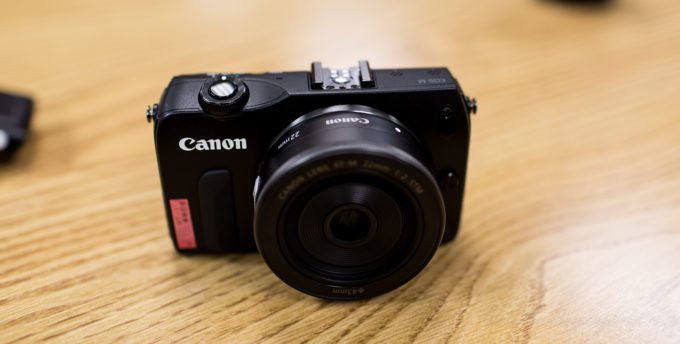
Fujifilm X
Fujifilm’s X system, despite being one of the youngest mirrorless systems, already has a substantial lens setup with some very good zoom and prime lenses. Ranging from super wide-angle up to moderate telephoto lenses, including some super fast prime lenses and a dedicated macro lens, the X-mount lens setup has something in store for most photographers, be they amateurs, enthusiasts or professionals.
With their integrated aperture rings, the XF lenses are clearly aimed at enthusiasts and professionals, while the simpler XC lenses are aimed more at amateurs and beginners. In addition to Fujifilm’s own lenses, Zeiss has three more prime lenses for X-mount: an ultra-wide angle, a normal focal length and a macro lens.
Here are some of our favorite X-mount lenses:
- Fujinon XF 18-55mm f2.8-4: faster than most kit zooms, this lens convinced us that kit zooms can actually be great lenses.
- Fujinon XF 27mm f2.8: a moderately fast wide normal lens, great for street photography and super compact due to its pancake form factor.
- Fujinon XF 35mm f1.4: the fast normal lens for the X system is the one you’ll definitely want to get.
- Fujinon XF 56mm f1.2: the new super-fast portrait focal length creates mouth-wateringly beautiful images.
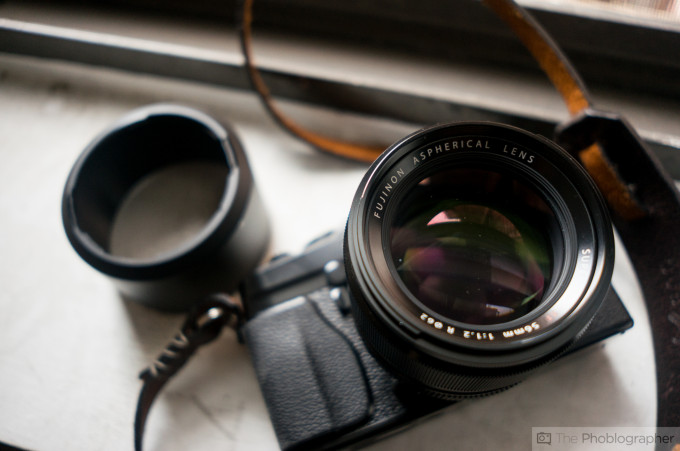
Read also: Three Lenses Every Beginning Fujifilm X Series User Needs
Micro Four Thirds
Being the oldest mirrorless system, Micro Four Thirds also has the most extensive lens setup. This is not only due to its age, but also to the fact that Micro Four Thirds is an open standard that any manufacturer can contribute to. So besides the lenses made by Olympus and Panasonic, there are also third-party lenses from companies such as Voigtländer or Sigma.
The lenses available for Micro Four Thirds comprise everything from ultra wide-angle to super telephoto, from ultra fast prime lens to superzoom, and include both autofocus and fully manual lenses. There are multiple macro lenses available, as well as fisheyes and other specialty lenses.
In addition to the native Micro Four Thirds lenses, a vast amount of Four Thirds lenses for the now-discontinued DSLR system by Olympus and Panasonic can be used on Micro Four Thirds cameras via an adapter. The Olympus OM-D E-M1 even supports the phase detection autofocus required to quickly focus these lenses.
Here are some of our favorite Micro Four Thirds lenses:
- Olympus M.Zuiko 17mm f1.8: a fast wide-angle lens with a clever manual focusing ring that makes it great for street photography.
- Panasonic Lumix 20mm f1.7: a cheap-and-cheerful, fast, wider-than-normal pancake lens that’ll stick on your camera.
- Panasonix Lumix 12-35mm f2.8: a moderately fast standard zoom lens with a versatile focal range and great image quality.
- Olympus M.Zuiko 45mm f1.8: another cheap-and-cheerful prime lens with great image quality, ideal for portraits and close-ups.
- Olympus M.Zuiko 60mm f2.8: a superb macro lens with great image quality that also doubles as a portrait focal length.
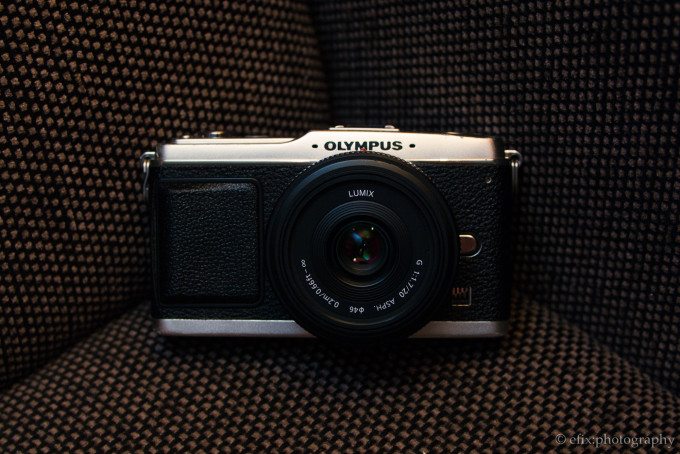
Read also: Three Essential Lenses for the Beginning Micro Four Thirds User
Nikon 1
The Nikon 1 system has some of the smallest lenses of all mirrorless system, right after the Pentax Q system. On the downside, the lens setup is nowhere near as extensive as that of the Fujifilm X system or the Micro Four Thirds system. The 1 Nikkor lens setup includes surprisingly small fast prime lenses, wide angle lenses, standard zooms, superzooms and telephoto zooms. A proper macro option is lacking thus far.
As with most other mirrorless systems, Nikon 1 cameras can be fitted with an adapter that allows the use of lenses made for Nikon’s F-mount DSLRs. The crop factor of 2.7x of the 1″-type sensor has to be taken into account when using these lenses on a 1-series camera.
Here are some of our favorite 1 system lenses:
- 1 Nikkor 10mm f2.8: a moderately fast and super small wide-angle pancake lens that can always stay on your camera.
- 1 Nikkor 32mm f1.2: a super fast portraiture focal length with great image quality in a very small package.
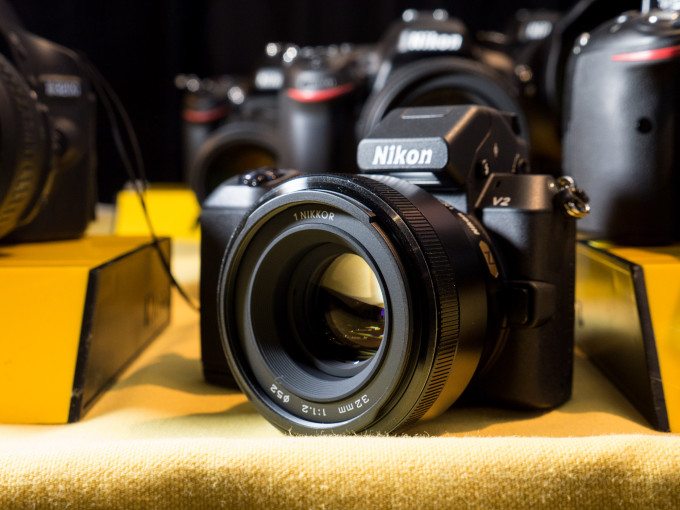
Sony NEX / Alpha E-Mount
Sony’s E-mount lens setup also has a very broad choice of lenses with viable choices for both amateurs and enthusiasts. Since E-mount cameras come with either an APS-C-sized sensor or a 35mm full-frame sensor, there are lenses for either sensor size. The lens selection for APS-C E-mount is much larger though, comprising prime lenses and zooms, wide-angle lenses and telephoto lenses, as well as a macro lens. For full-frame E-mount, only four lenses have been made so far: two zooms and two prime lenses.
In addition to the native lenses, A-mount lenses for Sony’s DSLR and DSLT cameras can be used with an adapter. Some E-mount cameras also support quick phase-detection autofocus with these lenses.
Here are some of our favorite E-mount lenses:
- Sony E 24mm f1.8: a classic 35mm-equivalent focal length with a fast aperture and superb image quality.
- Sony E 35mm f1.8: a fast normal focal length lens with a great ratio between price, size and image quality.
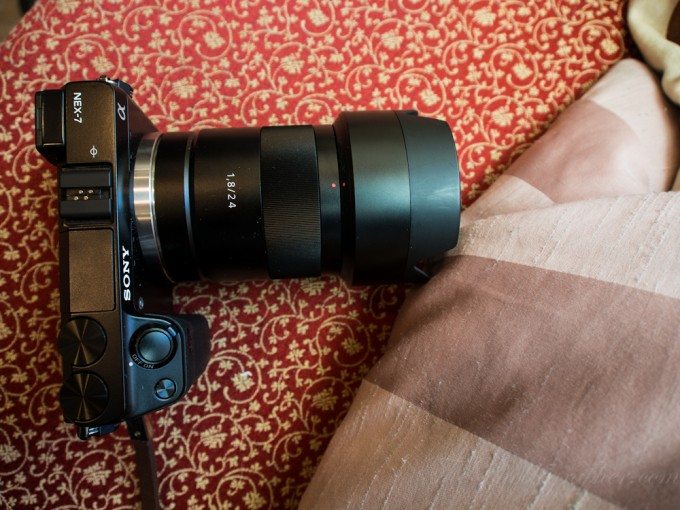
Samsung NX / NX Mini
Samsung’s NX system has been around for quite a while, but its lens setup isn’t as extensive as that of other mirrorless systems. This is in part due to the fact that the NX system, while providing great quality and lots of features at competitive prices, has never been as popular as Micro Four Thirds, Sony NEX (now part of the Alpha line) or even Fujifilm’s X system. That being said, the system still comprises many prime and zoom lenses ranging from super wide-angle to telephoto, including a dedicated macro lens.
The NX Mini system, being the youngest of all mirrorless systems, only comprises two lenses so far: a wide-angle prime lens and a normal kit zoom.
Here are some of our favorite NX-mount lenses:
- NX 30mm f2: a fast normal focal length lens that comes with a slim pancake profile, ideal as a walkaround lens. (Did we mention we love pancake lenses?)
- NX 85mm f1.4: a super fast portrait focal length providing jaw-dropping image quality, probably the best lens of the system.

Pentax Q
The Pentax Q system is somewhat of an oddball, coming with two different point-and-shoot-sized sensors and only three camera models. Due to a lack of popularity outside Japan, the system has not many lenses. Also, going with the toy-like appearance of the Q system, there are a number of so-called ‘toy’ lenses for the system that are not focused on image quality so much as creativity.
In addition to the native lenses, there is an adapter to use K-mount DSLR lenses on the Q system. However, due to the strong disproportion in size, as well as the huge crop factor, the use of K-mount lenses on these tiny cameras is not something we’d recommend.
If we had to pick a favorite, it would be the 8.5mm f1.9 prime lens, which renders a normal angle-of-view equivalent to 47mm on the Q10 and 40mm on the Q7.
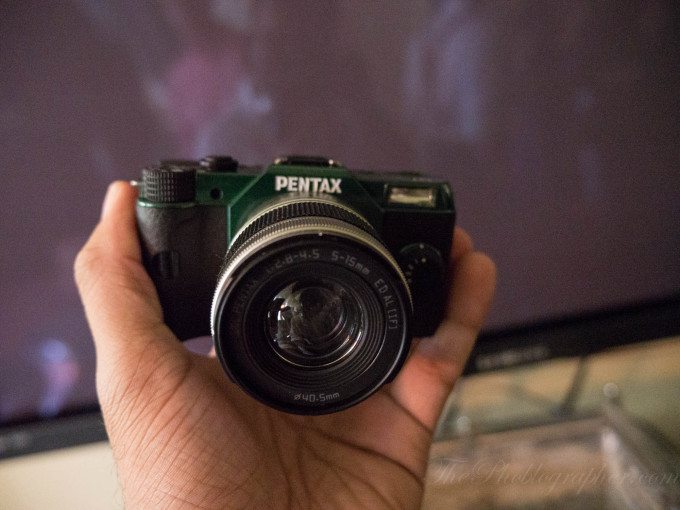
Read also: The Best Budget Lenses for Mirrorless Cameras
Conclusion
In this article, we took a look at the different mirrorless camera systems, and evaluated their respective pros and cons. The decision which camera to buy rests on a number of factors, including size, features, image quality, and the lenses available. With the information provided in this article, you should be able to narrow down the choices that fit your requirements.
In the end, though, what is most important in a camera is that you feel comfortable using it. That you can only find out by actually holding it in your hands and using it, so we recommend visiting the camera store of your choice and trying out the products you have in consideration before making a final buying decision.
Where to Buy
If you’d like to purchase any of the cameras or lenses mentioned in this article, you can do so either at your local camera store, or via an online retailer. Below, you can find links to product listings at Amazon.com and B&H Photo for the mirrorless system mentioned in this buyer’s guide.
Buy Canon EOS M cameras at Amazon.com & B&H Photo
Buy Canon EF-M lenses at Amazon.com & B&H Photo
Buy Fujifilm X series cameras at Amazon.com & B&H Photo
Buy Fujifilm X-mount lenses at Amazon.com & B&H Photo
Buy Micro Four Thirds cameras at Amazon.com & B&H Photo
Buy Micro Four Thirds lenses at Amazon.com & B&H Photo
Buy Nikon 1 series cameras at Amazon.com & B&H Photo
Buy 1 Nikkor lenses at Amazon.com & B&H Photo
Buy Pentax Q series cameras at Amazon.com & B&H Photo
Buy Pentax Q-mount lenses at Amazon.com & B&H Photo
Buy Sony E-mount cameras at Amazon.com & B&H Photo
Buy Sony E-mount lenses at Amazon.com & B&H Photo
Buy Samsung NX series cameras at Amazon.com & B&H Photo
Buy Samsung NX-mount lenses at Amazon.com & B&H Photo


